The US Marine Corps’ “Longest Day” – June 6, 1918
“We wore the army uniform,” wrote Elton Mackin, a United States Marine on the Western Front in 1918, “and only an occasional insignia here and there on pistol holsters, caps, and such identified us as Marine Corps…We were outcasts of the AEF — the Leathernecks. We kept a fierce self-conceit and pride.”
Although forced to wear the nondescript apparel of a regular “Doughboy,” the U.S. Marines in Europe during the closing year of World War I fought with no less distinction than in conflicts past or since. During the course of seven months in 1918, the “Teufelhunde” solidified their reputation as an elite fighting force and contributed to the Allied victory on the Western Front.
The lessons learned from their time spent in Europe transformed the corps’ approach to small unit tactics and strategic execution, not only preparing this courageous force for conflicts to come, but also establishing a legacy that Marines to the present day consider a history worth preserving. One day in the Marine Corps’ history, in particular, demonstrated their willingness to make the ultimate sacrifice for country and corps.
When the United States declared war against Germany and the Central Powers, the United States Marine Corps had 13,795 men, including non-commissioned officers, warrant officers, and enlisted men readily prepared to take the fight to the Western Front. Furthermore, 187 officers and 4,546 enlisted men served at duty stations throughout the world with half that number serving sea duty aboard various naval vessels.
After basic infantry training, the Marines underwent further survival and combat training for eight to twelve weeks. The training areas had been fashioned out of the landscape to mirror the fighting conditions of the terrain that the Marines would subsequently encounter in France on the Western Front. As a result of this focused training, the Marines emerged as a well-honed, cohesive fighting unit. Marines received intensive combat training where they exhibited a professional proficiency.
Army infantrymen, on the other hand, trained for combat in Europe and shipped out so quickly that the recruits arrived on the battlefield untrained for the rigors of combat on the Western Front. However, they did receive the manual of arms when it came to the combat rifle chosen by the military, the Springfield Model M1903. Even General John J. Pershing, commander of the American Expeditionary Forces, expressed concern over troops being sent to the front lines without the proper training in the Manual of Arms. Pershing admired the First Infantry Division for their aggressiveness, yet “found them highly unmilitary in appearance, bearing, drills, skills, attitude toward training, and leadership.”
The 4th Marine Brigade contained two regiments, the 5th and 6th Marines. Brigade command fell to Brigadier General James G. Harbord, USA. Maj. Gen. Harbord was a soldier’s soldier, having rose through the ranks from private, but determined early in his career to become an officer. Gen. Harbord impressed his superiors so indelibly throughout his career with his efficiency at organization that one of his superiors and later respected colleagues, Gen. Pershing, could think of no one better to lead the 4th Brigade than General Harbord. The 4th and its supporting units fell under the direct command of the 2nd Division, under the command of Major General Omar Bundy.
The German army that the Americans would soon face across the deeply scarred battlefields of France would be re-energized with the fresh and seasoned troops. With the Treaty of Brest-Litovsk in early 1918 and the withdrawal of Russian troops from the war, experienced, battle-hardened German imperial troops were now free to conduct a one-front war for the struggle on the Western Front. For the first time in the conflict since 1914, the Germans held numerical superiority over the Allies and determined they would use that superiority in finally bringing victory to the Fatherland. General Erich von Ludendorff and Field Marshal Paul von Hindenburg, joint commanders of the German Imperial Forces, believed that the numerical superiority and the experience that these troops would bring to the Western Front could capitalize on a series of well-defined offensives meant to finally cripple the Allies and bring them to the negotiation table.
The action known as the Somme Offensive began on March 21, 1918. Elements of the Germany’s Seventeenth, Second, and Eighteenth Armies attacked the British First, Third, and Fifth Armies along a 50 mile front. At sunrise on the 21st, a heavy German artillery barrage began near St. Quentin against British holding the line there.
The Germans attempted a raid near Armentieres, but British troops in the area managed to hold and the Germans retreated back to their own lines. An all-out German infantry attack followed the bombardment, starting just north near Limy and extended southward to the town of LaFere, pushing west more than forty miles into Allied-held territory. This large advance compromised several of the Allied forward positions and a later artillery duel began between the German and British gunners with neither side gaining any specific tactical advantage. The Germans overran the British and French along the whole front, but eventually the British regrouped and along with the twelve French divisions, stopped the Germans just short of the town of Amiens.
The second German offensive began on April 9, 1918, launched from the banks of the Lys River. German troops attempted to push west by northwest over a twenty-one-mile front. The Germans initiated a harrowing bombardment with high explosive and gas shells on a 17,000-yard front between the towns of Armentieres and Liens the day before, but no infantry attack followed the barrage. The Allies held firm throughout the night and the rain of steel ceased, but only temporarily. At 4:00 a.m., the Germans renewed their artillery until midday. The British and French lines held in spite of two additional heavy artillery attacks. However, on the left bank of the Oise, despite holding the German advance, British and French elements retired to stronger positions all along the front. Eventually, French commanders responded to British Field Marshal Sir Douglas Haig’s urgent request for more troops and the German advance halted. Moreover, five hundred American soldiers served in reserve alongside the British and the French in this second German offensive, cutting their teeth further on the Western Front until they took their turn in the line.
The third offensive, known historically as the Third Battle of the Aisne, began on May 27, 1918, with many of the old battlefields that swallowed up whole armies over the last four years seeing action once more. The German attack opened along the front between Soissons and Reims with a smaller action taking place south of Ypres.
The British held a fifteen-mile front from Barisis in the north to Rheims, the southernmost point of the German offensive, while French troops held the line at Chemin des Dames. In some places along the front, the Germans pushed forward, regardless of the mounting casualties. The advance subsequently reached the Marne, approximately fifty-six miles from Paris. Because of a lack of supply, weariness, and repeated Allied counterattacks, the Germans halted at that point. The British casualties amounted to 29,000, wounded or killed, and the French lost 98,000 men, whether it was to wounds or surrender. Although Generals Hindenburg and Ludendorff considered their casualties as light, German soldiers tired of the war surrendered en masse and the advances made during the course of all the offensives left German troops exposed in obvious salients. These offensives, sparked by an end to the stalemate that plagued the Western Front for four years, surprisingly convinced the Germans that victory was within their grasp, despite the mass surrenders and men incapacitated through battle. Subsequent battles with the U.S. Marines convinced the Germans otherwise. As Hindenburg and Ludendorf basked in their victories, after the Third Battle of the Aisne, in an effort to bolster French divisions near the Marne River, Gen. Pershing (with French indecisiveness looming), ordered the U.S. 2nd Division containing elements of the 4th Marine Brigade to hold the line at the Marne salient close to Paris. The 4th Marine Brigade had “been placed at the disposal of the (French) Sixth Army.”
Even with the Americans taking a more active role in defense, German High Command felt confident that more Germans victories would assist in garnering more support for the war at home that had been waning for the previous two years. Nevertheless, even though their manpower may overwhelm the allies, the Germans lacked materiel. Even Field Marshal von Hindenburg expressed reservations as to whether Germany would prevail when he stated, “We had neither the resources nor the time for battles of that kind, for the moment was coming nearer when America would begin to come on the scene fully equipped.”The importance of a German victory through these offensives demonstrated the German high command’s desperation and although the Germans recognized the American resolve to fight, von Hindenburg noted again, “We made the acquaintance of her (US) first trained troops at Chateau Thierry. They had attacked us there, and had proved themselves clumsily but firmly led.”
On June 1, 1918, the Germans occupied Hill 204 on the western side and then marched into the village of Vaux, straddling the Paris-Metz Road and occupied the Bois de Belleau (Belleau Wood). Later on that day, the 4th Marines “established a line starting in the Clerembaut Wood just north of the road, running on through Lucy-le-Bocage and Belleau Wood to the village of Champillion.” With the French divisions in the area relieved, by 10:00 a.m. on the morning of June 5, 1918, the 4th Brigade held the line in what commanders called the “Triangle”: Lucy-le-Bocage, the wood northwest of Lucy-le-Bocage, Hill 142, the Champillion-Bussieres Road, and eight hundred seventy-five yards north of Champillion.
The Allies stopped the German advance on Paris and established a firm front on June 5, 1918, at which point, “found the line of the 2nd Division well-established at that point of the Marne salient nearest to Paris.” With a successful defense from the German onslaught and the active participation of American forces, public confidence in an Allied victory rose. Now the Americans, especially the Marines, would prove their worth.
On the evening of June 5th, Brig. Gen. Harbord issued operational orders to the 4th Marine Brigade stationed at Ferme de la Loge:
The enemy holds the general line BOURESCHES – Bois de Belleau —- TORCHY… This brigade will attack on the right of the French 167th Division from the Little Square Wood…
Gen. Harbord set the operation commencement at 5:00 a.m. of June 6th and further orders would follow as the brigade met its objectives. The commander pointed out that the most important objective for American forces in the opening days of the offensive was Hill 142 near Bussiares.The entire 2nd Division strengthened near Montreuil-aux-Lyons and augmented their line where, “a number of local attacks were repelled by 4th Brigade during the day,” and casualties were reported as minimal.
At 12:35 a.m. on June 6th, Colonel Wendell C. Neville, commanding the 5th Marine Regiment, examined the enemy positions and how best to assist the French units in the area, specifically in the small patch of land known as the Bois de Belleau (Belleau Wood). Just beyond lay their objective, Hill 142, East of their staging area. Lt. Col. Logan Feland of the 5th Marines requested an artillery barrage to make their further movement easier and hoped to catch the Germans by surprise. Lt. Col. Feland also hoped that the artillery barrage would halt the German planes consistently harassing his troops as they positioned themselves for the offensive. Captured Germans from trench raids the night before gave their own troop positions that demonstrated their lack of resilience to Allied interrogation and their willingness to assist the Allies in ending the war by betraying their comrades. The preliminary interrogation of three German prisoners revealed how their units arrived, their strength, and artillery support lacked in supplementing any type of formidable defense of the area.
Shortly before 5:00 am, the Marines of the 5th Regiment quietly advanced from their trenches toward the wheat fields ahead to capture one of their main objectives, Hill 142, southwest of the village of Torchy. When the first line broke the outskirts of the woods, the German Maxims opened fire, breaking the silence of that humid June morning. Most of these Marines who walked in their lines toward the village never experienced combat before making their way to Europe. Gunnery Sergeant Aloysius P. Sheridan (6th Marines, 2nd Division), described what happened next:
“I was in the first platoon and our platoon was on the right flank of the company. So we advanced a little too fast for the rest of the company.” Gy. Sgt. Sheridan further related that his unit halted under the orders of his company commander, Captain Donald Duncan, until the rest of the company could catch up with the lead units. Once the other caught up, the units proceeded parallel to one another, and the attachment realized they were only six hundred yards from their objective. Gunnery Sergeant Daniel Joseph Daly, a seasoned and decorated combat veteran of two prior campaigns, shouted to his comrades, “C’mon you sons-a-bitches! You wanna live forever?!” Under heavy enemy fire, the 3rd Battalion, 6th Marines made their way down a hill when a soldier hit the ground wounded by a German machine gun round. Gy. Sgt. Sheridan witnessed the incident:
The top soldier was with him all the time and I was with him all the time and I was there in a jiffy. We got a naval doctor, a hospital apprentice, the top (platoon sergeant) and myself and carried him to a clump of trees. All the time he was gasping, hit through the stomach. We no more than laid him on the ground when a big eight-inch shell came and killed all but myself.
Gy. Sgt. Sheridan survived through three exploded shells on that day, but was later incapacitated through a subsequent gas attack.
Maj. Julius S. Turrill, commander of the 1st Battalion, 5th Marines, near the vicinity of Hill 142, realized his position tenuous and stated he would “have to fall back” if reinforcements did not make their way to his position when he dispatched to his headquarters, “there is nothing on my right between the front and way back to where we started from.” The Marines learned that victory would still be costly despite the intelligence.
Maj. Turrill’s 5th Marine Regiment made their way through a wheat field immediately adjacent to Belleau Wood. The reality of war awoke those present to observe the results of the attack. According to one soldier waiting to take his place amongst the advancing Marines, the “Wounded began trickling back. They told conflicting stories. Some were cheerful and said our gang was licking the hell out of the Boche. But a few seemed depressed, telling stories of whole platoons being wiped out by machine guns. We gave them cigarettes and went back and sat in our holes.” Franklin D. Roosevelt, Assistant Secretary of the Navy and later 32nd President of the United States, traveled through the Western Front inspecting the troops. In June 1918, Asst. Sec. Roosevelt witnessed the Marines in combat near Belleau Wood and recorded his observations:
I have seen blood running from the wounded. I have seen men coughing out their gassed lungs. I have seen the dead in the mud. I have seen two hundred limping, exhausted men come out of the line…survivors of a regiment of one thousand that went forward forty-eight hours before.
The Marines faced division after division of battle-hardened German imperial troops, and yet left the relative safety of their makeshift foxholes relentlessly pursuing their attacks past the woods into the wheat field. By sunrise of the 6th, the 5th Marine Regiment tenuously held Hill 142. Major Turrill reported from ½ km north of Hill 142, northwest of Champillion that, “We have reached our objective and intrenching [sic].” At the time Maj. Turrill wrote his report, the Germans shelled his new positions unremittingly, but the Marines held fast, anxious to continue their advance.
At 2:05 p.m. June 6th, Gen. Harbord ordered a renewed attack in two phases: (1) the first phase called for the 3rd Battalion, 5th Marines to attack Belleau Wood on the left, while the 3rd Battalion, 6th Marines to attack on the right; and (2) the second phase called for these same units to also attack Bouresches village, just slightly west of the woods. The 2nd Artillery Brigade would provide a barrage for the Marines to advance forward while machine gun companies provide cover for the Marine procession. This attack would take place at 5:00 p.m. Two hours later, the 4th Brigade HQ reported on the success of the attack where the plans executed went “beyond our most sanguine expectations.” Colonel Manus McClosky reported on the evening of June 6th that the Marines took Torchy, Bouresches, and the railway station in the latter village. By 8:07 p.m., the Marines also held the eastern edge of the Bois de Belleau, but the French experienced difficulty in achieving their objectives, exposing a large gap in the Allied line.
Not all of the operations that day met with the approval from the upper echelons. The 6th Marines received orders from Brig. Gen. Harbord during the second phase of the attack at Bois de Belleau and Bouresches to take Hill 133 from the right with the 3rd Battalion, under the command of Colonel Albertus W. Catlin. Later that day, an agitated Brig. Gen. Harbord wrote to Lieutenant Colonel Harry Lee that:
I am not satisfied with the way you have conducted your engagement this afternoon. Your own regimental HQ and this office have not had a word of report from you as to your orders or your position… I want you to take charge and to push this attack with vigor [!]…I want reports from you every fifteen minutes. Send them by runner if necessary.
The next day, June 7th, Lt. Col. Lee finally responded with a detailed report, following the orders of his commanding officer.
By the time the Marines secured their objectives on June 6, 1918, they suffered over 5,7000 casualties in that one day, including 113 officers. Although they did not defeat the whole German army in one battle, the Marines’ accomplishments that day certainly re-energized the allied determination to win. The valor shown that June day included two Medals of Honor awarded for actions beyond the call of duty. Gunnery Sergeant Charles F. Hoffman (his real name Ernest August Jansen) received the Army Medal of Honor for his heroic actions on June 6, 1918. In the fight for Hill 142, Sgt. Hoffman bayoneted two members of a German machine gun detachment attempting to outflank the Americans after capturing their objective. His actions prevented a successful counterattack and allowed the Marines to hold their objective, stalling any further German attempts to retake Hill 142. Weedon E. Osborne (Lieutenant Junior Grade, Dental Corps), acting as a corpsman assisting the wounded, was attached to the 6th Marines and worked diligently during the height of the combat on June 6th. Lt. (j.g.) Osbourne saved many a wounded Marine that day, but later died carrying a wounded officer to medical attention.
At the close of a sweltering June 6th, the Marines of the 4th Brigade demonstrated to their fellow servicemen, the Allies, and the enemy the origins of a strong warrior culture still taught to young Marines entering basic training to this day. Although each branch of the service exhibits their own degree of pride, the United States Marine Corps presents their history with added zeal and grit. The objective of teaching “boots” their history is to give them a sense of “Espirit de Corps,” making them part of brotherhood larger than themselves, and by joining the Marine Corps and displaying these qualities, they themselves will only add to that legacy. These teachings also instill a creed never to dishonor the Corps themselves. The men who fought, were wounded, or died in the Bois de Belleau in early June of 1918, established an inheritance of honor for future Marines to attain, and taught every American the meaning of the word “honor.”
General DeGoutte, commander of the French Sixth Army, noted, and strongly suggested, on June 30, 1918:
In view of the brilliant conduct of the Fourth Brigade of the Second United States Division, which in a spirited fight took Bouresches and the important strong point of Bois de Belleau, stubbornly defended by a large enemy force, the General commanding the Sixth Army orders that henceforth, in all official papers, the Bois de Belleau shall be named “Bois de la Brigade de Marine.”
By Alan G. Gauthreaux

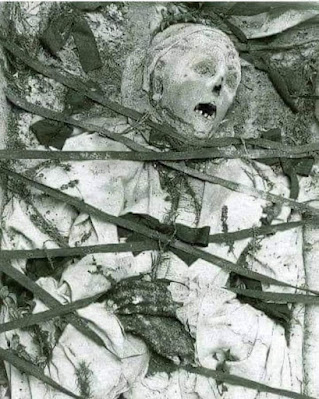
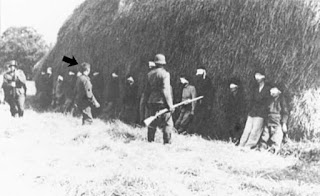

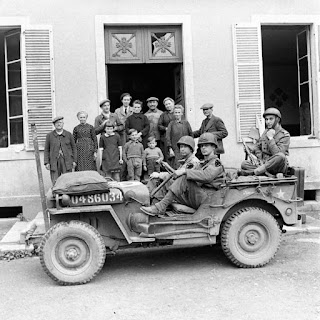




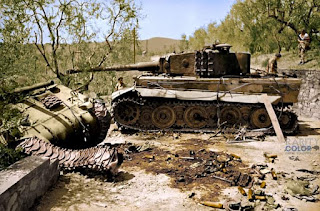
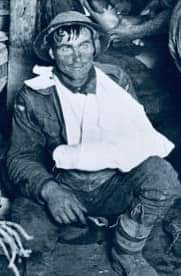
Comments
Post a Comment